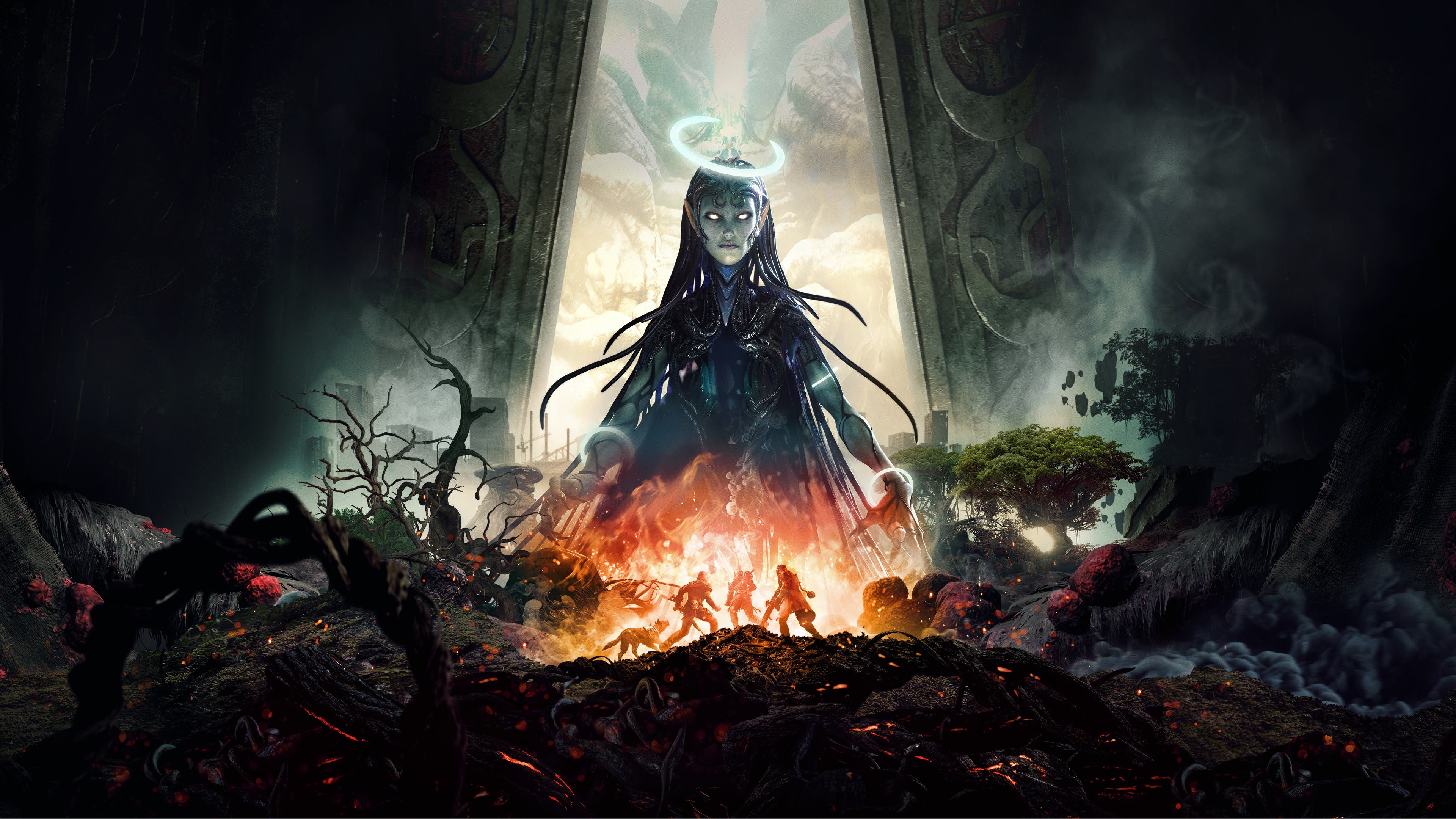Trying to describe Remnant II in the traditional “X meets Y” or “the Y of Z” results in an overly reductive list of genres and archetypes that don’t do the game any form of justice or accuracy. Its predecessor already came out swinging and full of surprises in 2019, and it was such a wholly unique and exciting experience that I couldn’t contain my enthusiasm for it. I’ve been patiently, eagerly awaiting the sequel, hoping that it would somehow at least match the unbridled creativity of the first game, and folks, Remnant II is gonna knock you off your feet, across the room, and through the wall across multiple universes to deliver the most unique, thrilling, and imaginative game of this year.
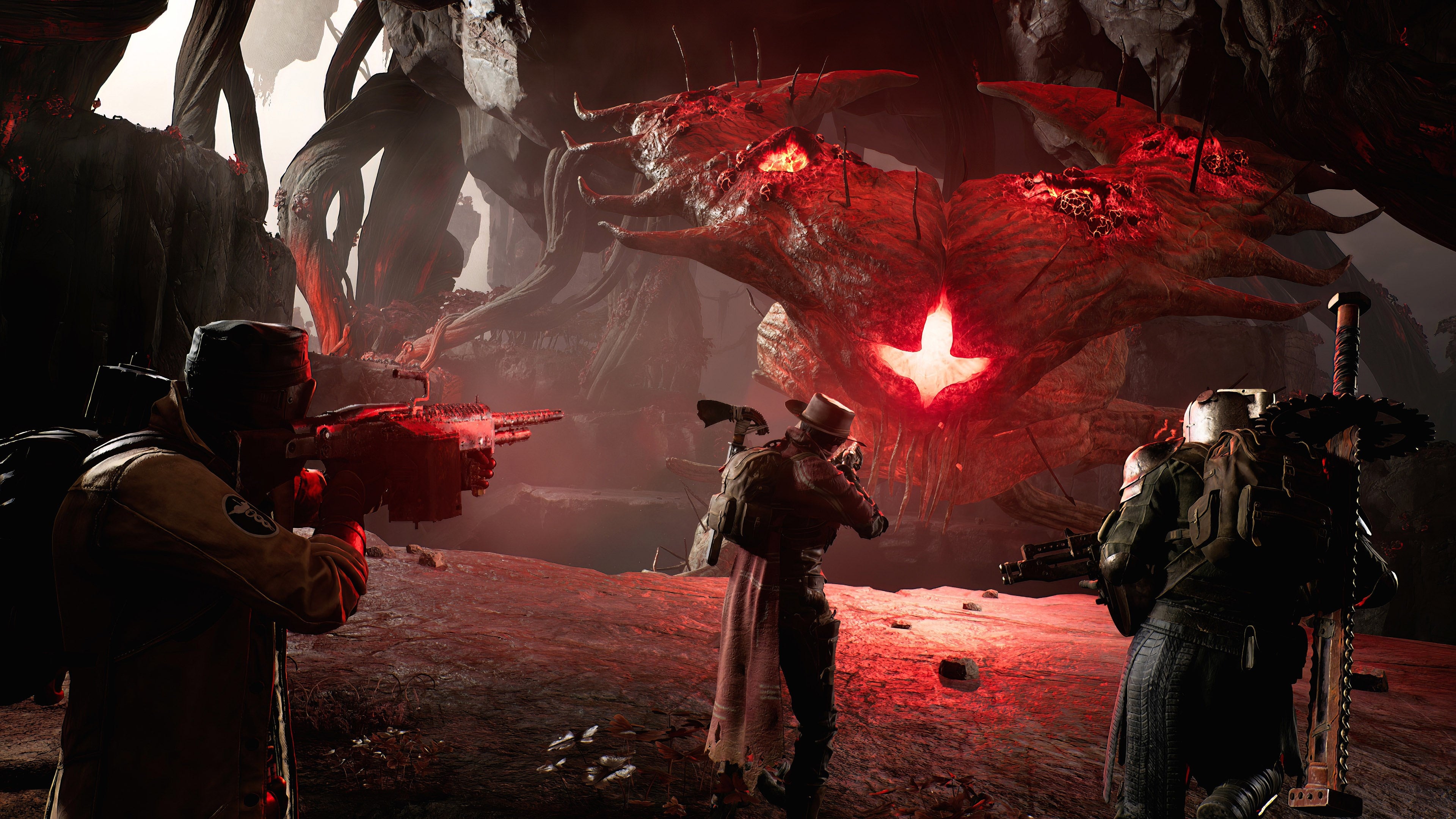
It’s not enough to say that Remnant II mashes up some of your favorite pieces of various games to make something fun, because it does so much more than just remix and repurpose. The first game was already impressive in its ambition and scope, capturing that lightning in a bottle a second time would be a seemingly impossible task, but even from the opening hours of Remnant II, it’s evident that the folks at Gunfire have so much more up their sleeve than they can show us in a single game. All of that said, let’s try to set the stage; Remnant II is a class-based narrative-driven third-person shooter RPG with a host of upgradeable weapons and gear, loads of opportunity for character customization and modification, spanning a massive set of sprawling worlds with procedurally generated level designs and campaign progression order, playable with up to three from start to finish. Oh and it does the whole soulslike thing where resting at checkpoints respawns all of your enemies.
That’s a lot of word soup but what it boils down to is you and two of your friends can pal around on this amazing adventure across a wide variety of unique worlds, shooting and sort of looting your way through waves of bizarre, long-healthbar baddies that want nothing more than to murder you for existing in their realm, all the while picking up a rich assortment of weapons, skills, abilities, and rings to set you up to kick the most ass possible.
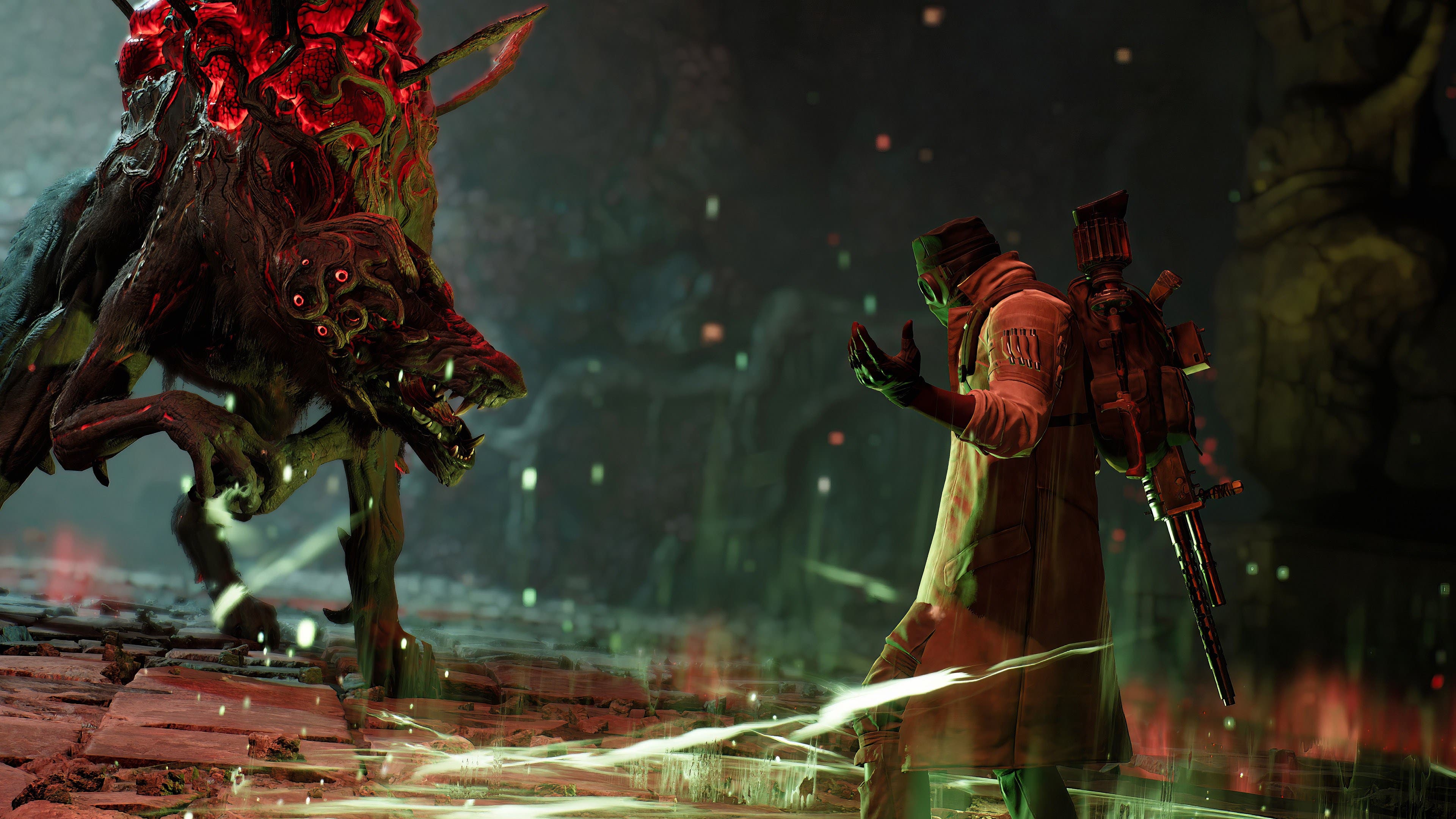
Remnant II picks up a bit after where Remnant: From the Ashes left off, starting you out on a tutorial with a computer-controlled companion character that sees you making your way through the ruins of the city until you reach Ward 13, the same Ward you were based out of in the first game. Only now, enough time has passed that with The Root mostly eradicated from Earth thanks to your previous exploits, it’s had opportunity to expand outside of its old underground vault and into the larger outdoor tutorial area from the first game. This new base of operations is filled with a cast of familiar and new NPCs alike, and you quickly make yourself at home among them with the intent of merely participating in the community, until hijinks ensue immediately and two important individuals disappear through the freshly reactivated World Stone (aka the big red shiny rock).
With a fresh reason to explore in front of you in the form of a rescue mission, your game becomes co-op enabled and you set off on your worlds-spanning adventure through time, space, and floating rocks to find out what happened to your new friends and potentially (hopefully?) destroy The Root once and for all. It’s a familiar enough premise for adventure, but a welcome excuse to dive back into this expanded vision from what the first game had on offer.
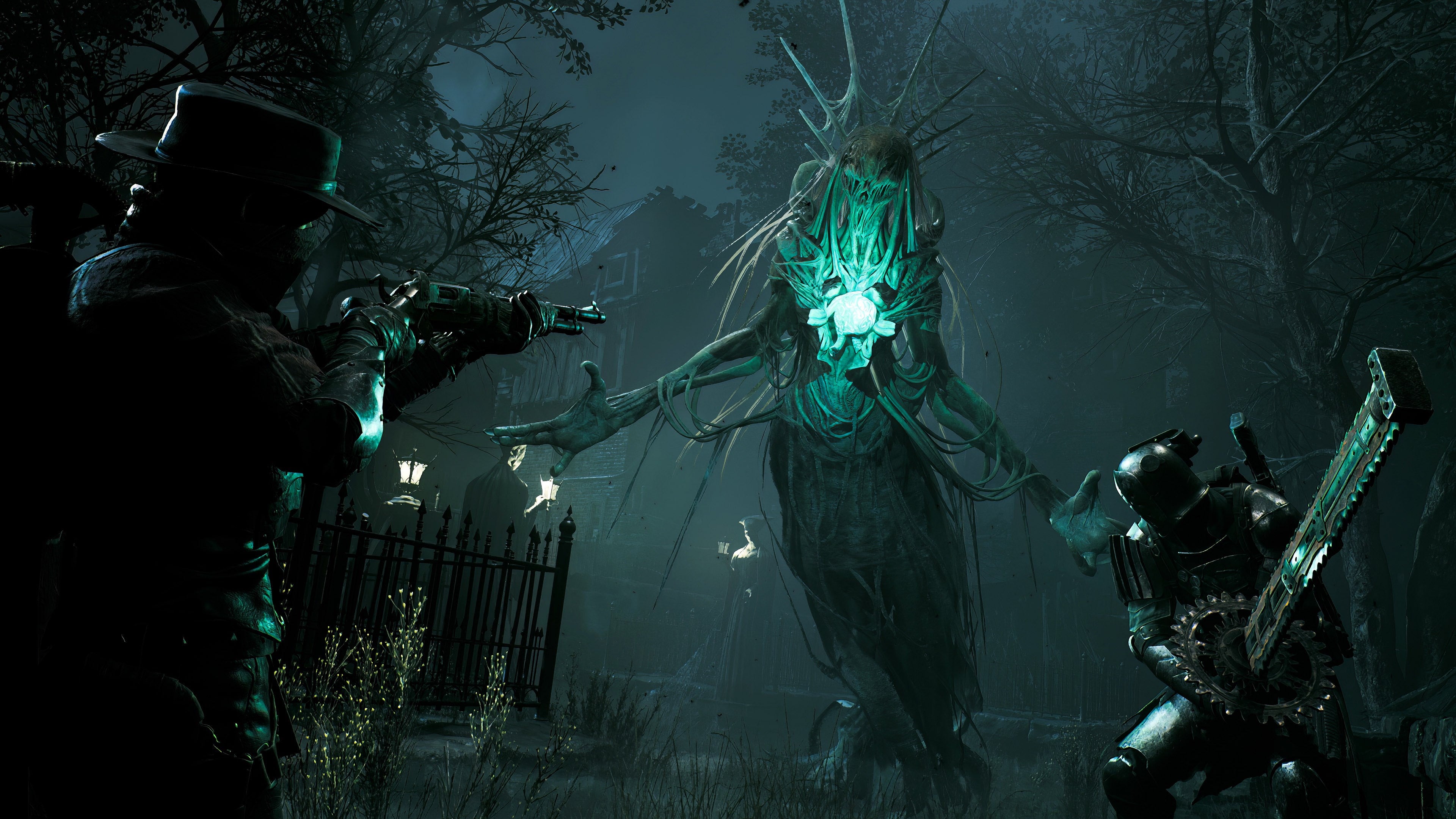
It is so immediately evident from the outset though just how much grander in scope and scale Remnant II is from Remnant: From the Ashes, which already felt like an ambitious and fairly large game. The very first world my party was dropped into after jumping through the crystal was N’Erud, a desolate expanse of a world cloaked in eternal night and little but rock, sand, and dust as far as the eye could see, until the swirling poisonous storm (affectionately dubbed the “Puke Clouds”) met your gaze at its borders. Peppered throughout were sentient-made structures leading to dungeons and sub-areas that allowed for progress through to the ultimate goal; facing down our first world boss. Overall our first excursion took us about three hours and many sub-bosses until we reached the ultimate guardian of N’Erud, which gave us a boss fight that felt inspired by some of Returnal‘s rudest foes.
Throughout our many challenges, we really had no idea what to expect going forward, as we quickly discovered that every new dungeon or sub-zone we entered could be drastically different from the place we had started from. I remember feeling a near-constant sense of awe and uncertainty, knowing that everything we were seeing could be upended at a moment’s notice, and that every time that happened it would be due to an exciting and totally unpredictable surprise.
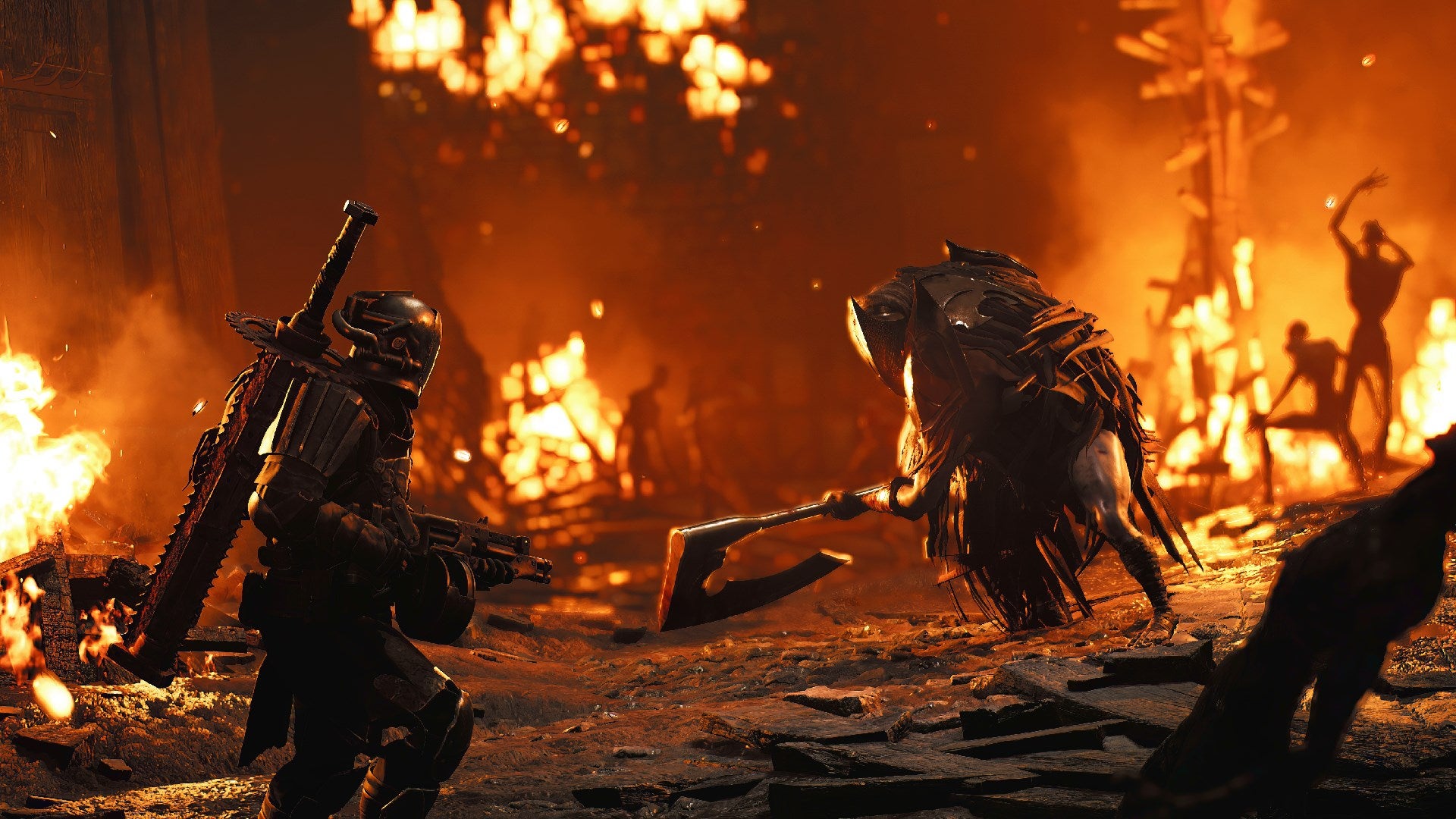
This is probably Remnant II‘s greatest trick; in a game that’s all about visiting strange new worlds, it still manages to constantly surprise and impress you by subverting itself and your expectations in kind; it has rules that it operates by, and it generally follows them, but it’s always expanding upon what those rules mean or how they can be interpreted; it’s not to say that everything is in bounds, but damn near anything is when it comes to locales, enemies, and boss fights. I’m being deliberately vague because so much of the enjoyment of Remnant II comes from experiencing as much of it as you can firsthand, but also every play-through is unique in its order and to some extent experiences.
In one night, my group played through a mysterious levitating labyrinth full of portals, floating stones, and constructs made of said stones that would throw themselves and each other at us; a fantasy-inpsired castle world occupied by malevolent faeries, angry fallen angels, and a giant blue woman living in an infinite lake of stars at the bottom of cave; and, a victorian-era city reminiscent of England, overrun with brainwashed townsfolk, self-immolating zealots, and some truly horrific grafted monstrosities (“Oh, the developers have played Bloodborne!”). Each of these places sported their own, setting appropriate artwork and flourishes that made them feel wholly realized and separate from one another, all while still fitting within the game’s broader visual style.
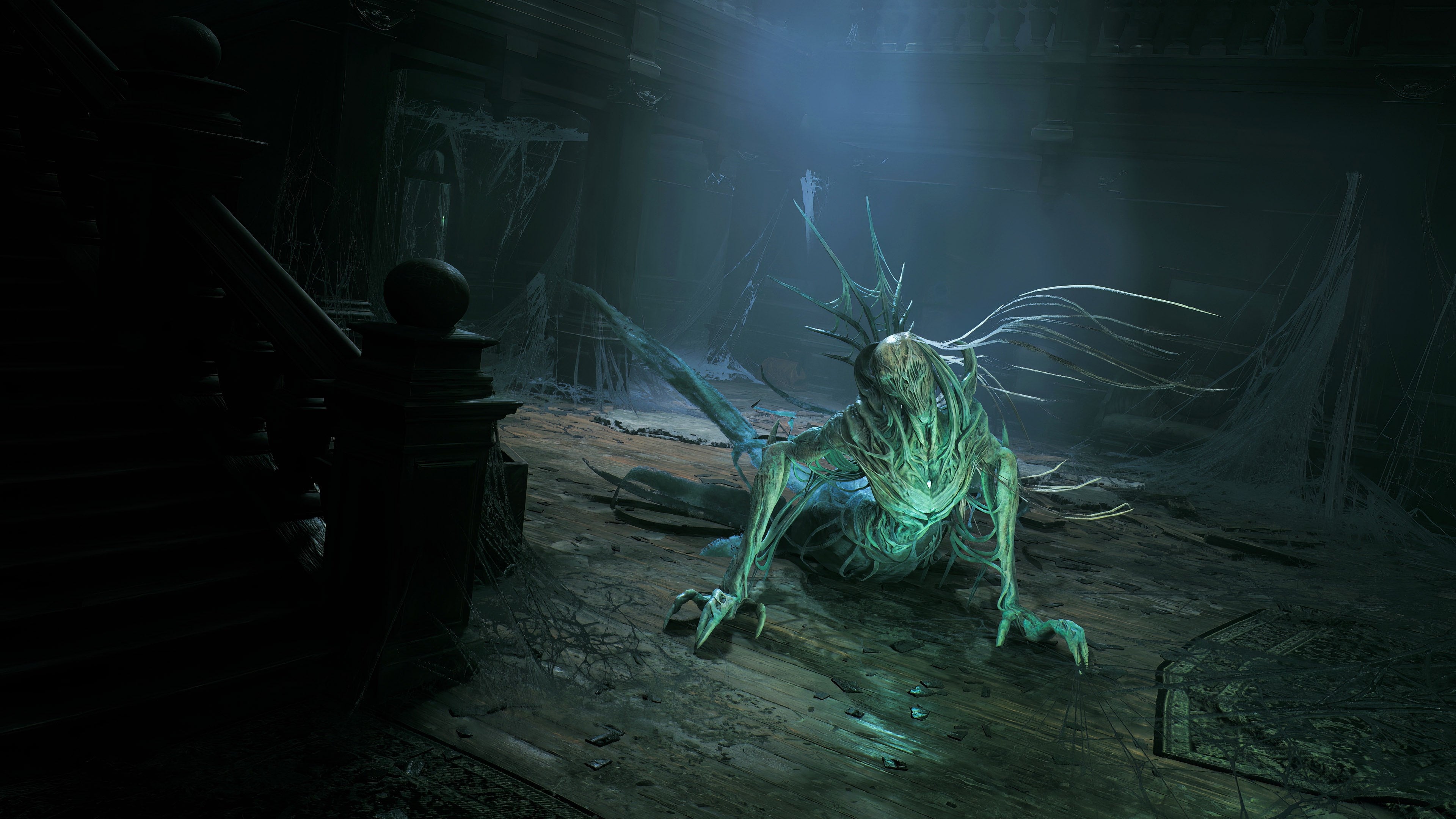
This just barely begins to paint a picture of the diversity on order in the level design of Remnant II, and that diversity and creativity extends to the weapons, enemy design, and bosses as well. You’ll go from standard weapon archetypes like rifles, pistols, machine guns, and shotguns, to using pieces from defeated bosses to construct weapons of totally foreign design and functionality, like something akin to Unreal Tournament‘s pulse rifle or a gun made of cubes that shoots small, fast moving cubes and giant, slow-moving energy cubes (“CUBE GUN!”). Your weapons are affected in both appearance and functionality by the mods you place on them, which grant unique aesthetics and abilities to them that increase their utility in combat. Your first weapon mods come from choosing your class (or “archetype”), but you’ll discover and craft more as you progress. Mods can have very meaningful impact on combat scenarios and especially in groups they can be used to amplify everybody’s damage or keep everybody alive. As you might expect by this point, the possibilities for what mods can do are pretty far-reaching and become increasingly strange and different as you get deeper into the game, further solidifying the concept that your guns are just a means to deal damage in creative and interesting ways, regardless of their dependence on bullets.
By far though some of the most creative things I’ve seen in Remnant II have been its boss fights. Full stop, these fights have been almost universally imaginative and expectation-breaking. Some of the bosses are still your standard bullet sponges, but they have specific ways that you can disable or otherwise debuff them to deal massive amounts of damage. Others completely toss out the traditional idea of boss fights entirely and force you into a sort of deadly obstacle course with destructible nodes you have to take out in order to completely shut it off and get out, except that the entire thing is somehow a single entity that is the boss you’re fighting and… yeah, it’s nuts, and it’s one of the most fun fights I’ve done in any game in ages.
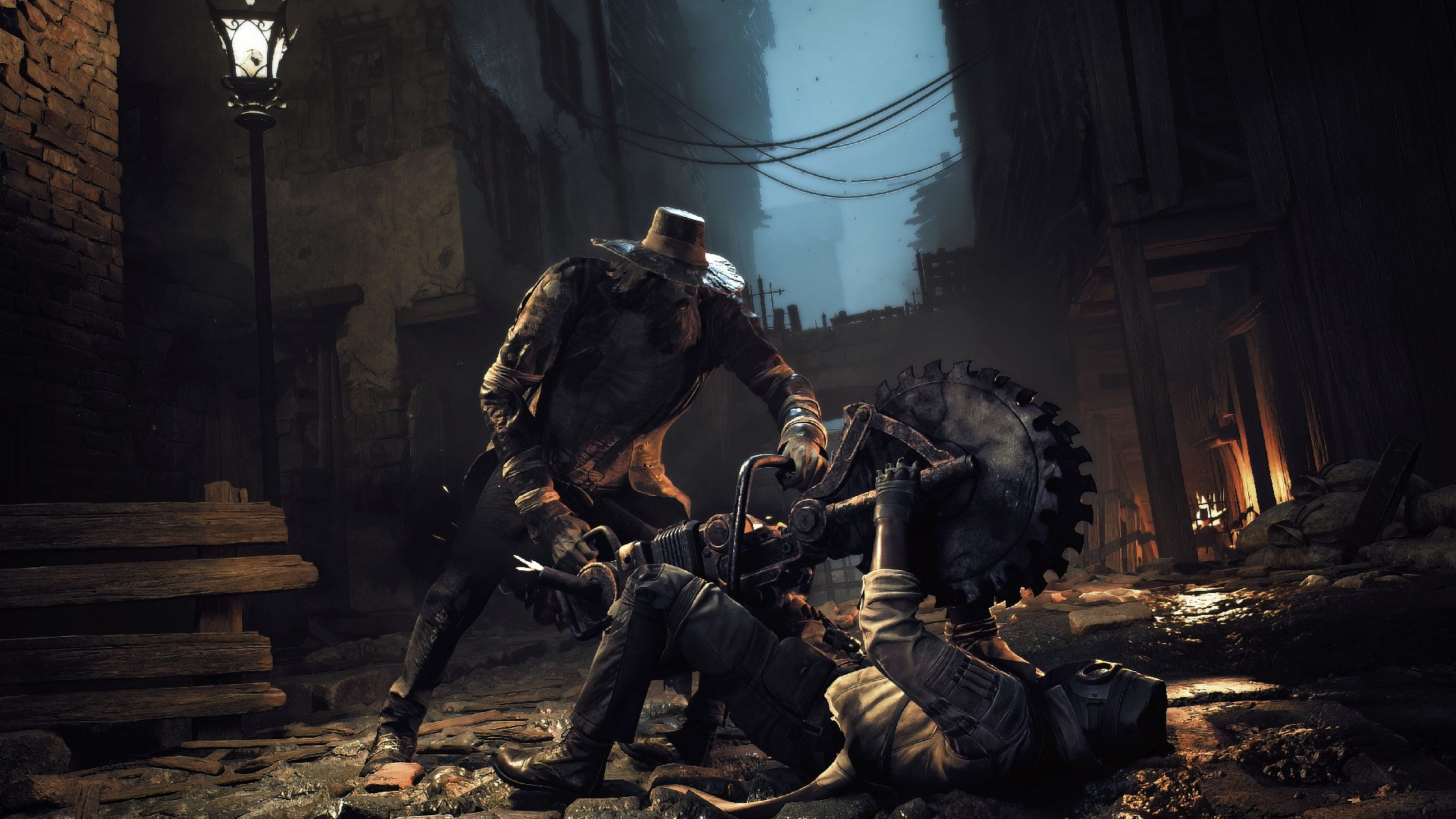
Because Remnant II isn’t a pure shooter, and because it embraces magic and mysticism in its “anything you can think of is possible” design ethos, it allows for some incredible creativity in its boss encounter design that I just cannot say I’ve seen in any other game that wasn’t a JRPG. These fights often force you to draw on your movement skills, shooting skills, situational awareness, and puzzle-solving skills all at once, and it’s an exhilarating feeling even taking part in these fights, especially when you emerge triumphant. Better still, rather than just throw incredibly hard fights at you for the sake of creating artificial challenge, every fight comes down to paying attention to your environment and the boss’s behavior, figuring out how to exploit those things to your advantage and look for openings, and then executing on your plan to take them down.
These encounters are perfectly balanced to provide the right level of challenge and achievability, so that instead of beating your head against a fight that feels hard for hard’s sake, you always feel like you’re on the cusp of winning, and every attempt could be the one that you win, which is the key to making some of the harder fights feel engaging and enjoyable even when you are in fact dying repeatedly. This was something the first game struggled with on multiple occasions so it’s amazingly refreshing to see how Gunfire Games has rethought their approach to boss design and presented what I feel is a prime example of how to create great boss fights.
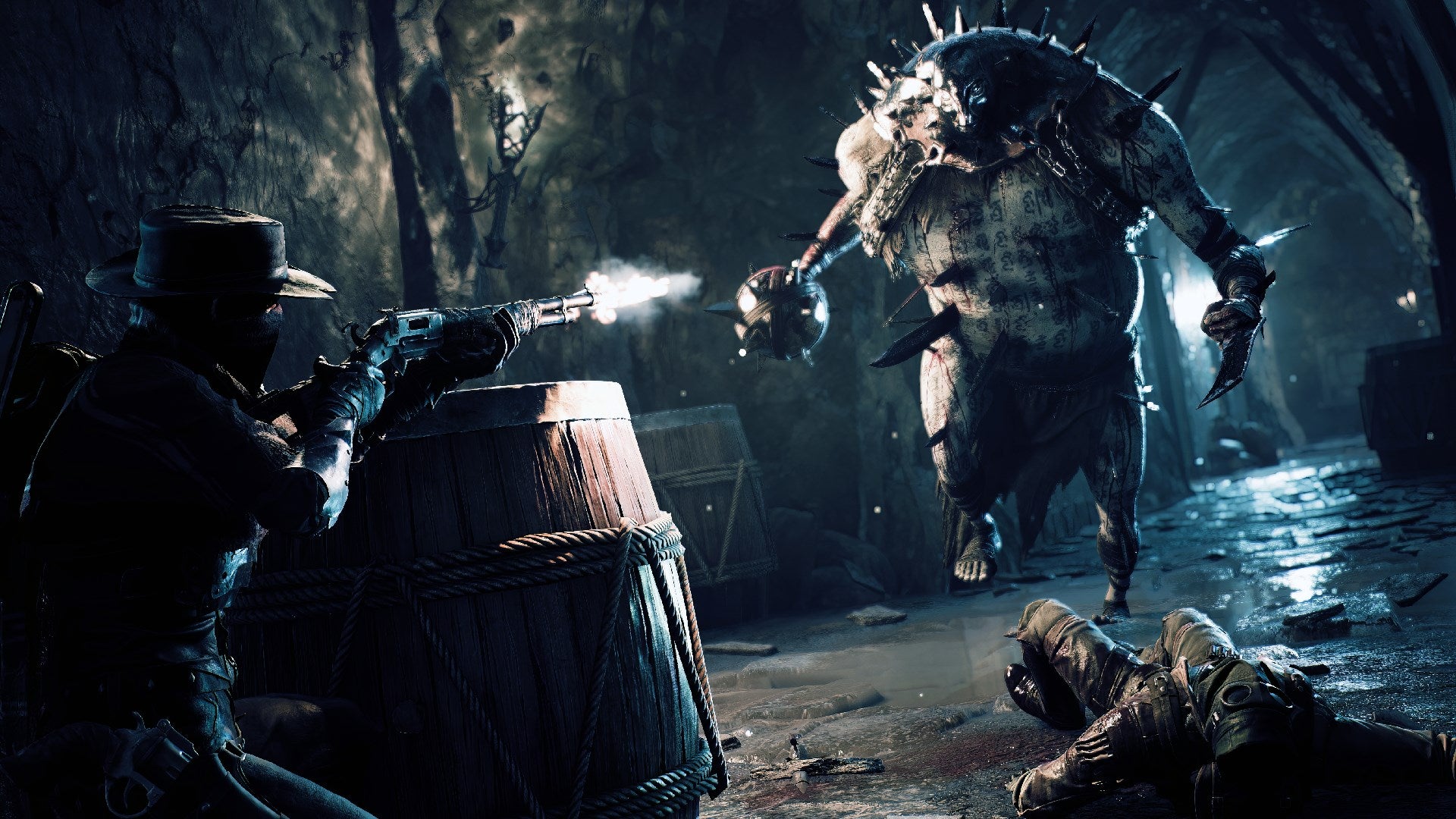
Your character is now more capable than before as well, owing to the expanded four ring slots instead of two, slots for two classes/jobs and their respective abilities, multiple options for your relic slot that expand way past the original dragon heart and give your build more flexibility to generate protection or mod power rather than straight healing (and the fact that your relic has three slots for equipping stat modifiers), and the mods and mutators system for expanding upon your weapons’ functionality. All of this feeds into how you build your character so that you can expand upon your archetype’s innate abilities or turn yourself into a weird synergistic machine of dealing damage to regenerate mod power to deal more damage to regenerate more mod power to keep your damage output constantly topped off. You can change the way you’ve chosen to customize yourself at any point in time, so there’s no limit to experimentation with the game’s mechanics, which lets you find a play style and ability set that works best for you. It’s really smart and a great setup for empowering players to explore.
Graphically, Remnant II does not disappoint, delivering a beautifully rendered world rich in detail and color and pushing way beyond the fidelity of the previous game. Because it uses an art style of exaggerated realism, it c an be easy to look at first glance and think “this is how I remember the first game looking,” but going back and comparing them you can see how much farther Remnant II pushes things in its overall level of detail, and the ways that it cleverly uses lighting, level design, and particle effects to draw you in an convince you that everything you’re seeing is plausible.
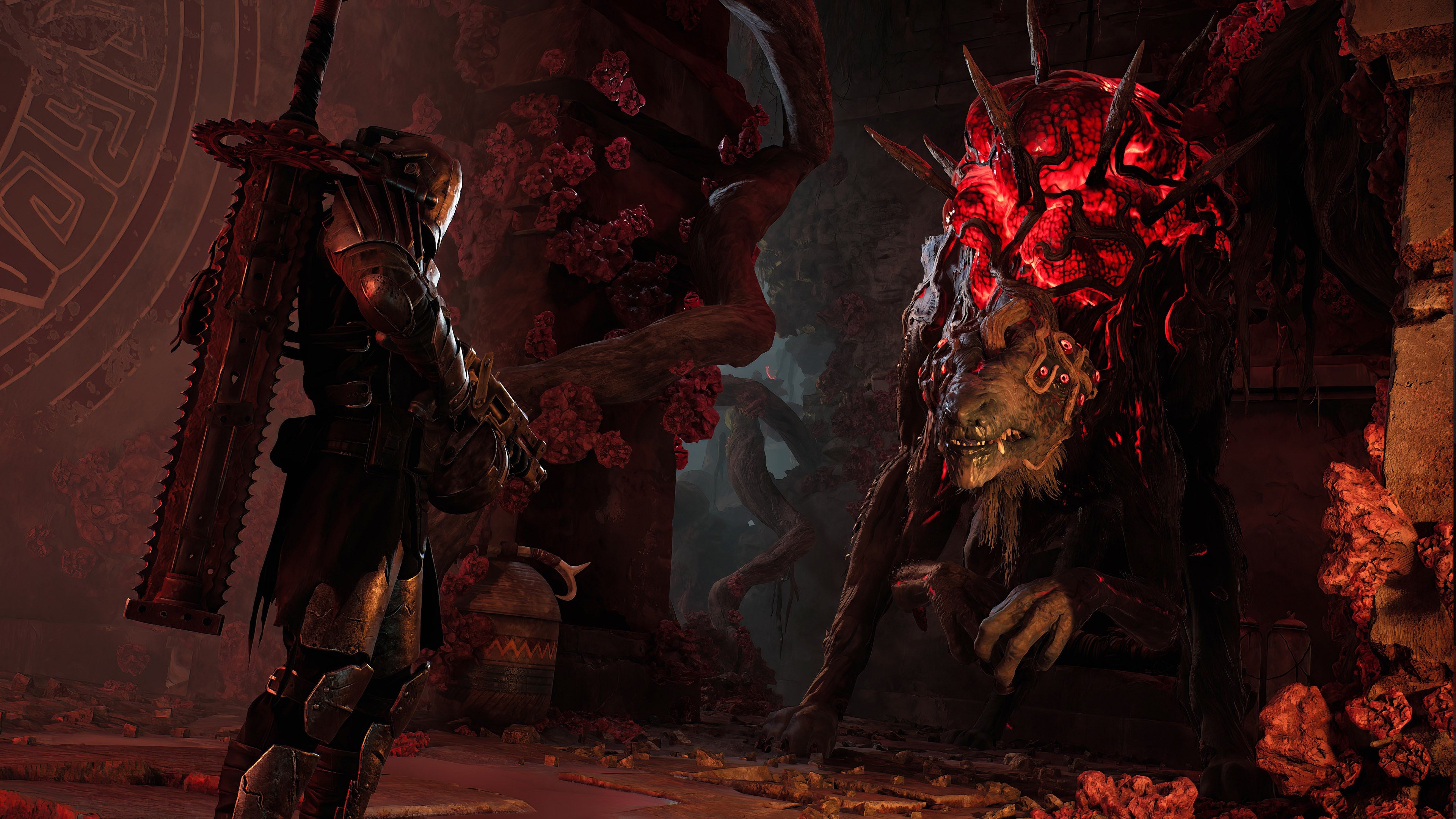
The soundtrack is also incredible, and there were so many moments where songs would kick in that fit the moment perfectly; pulsing beats and moody synth jams, orchestral swells, and sometimes just impactful “Inception horns” that underscored the combat, but not a single piece has felt out of place and it’s clear that the music is intended to be as much of a showpiece as the visuals.
Remnant II is a game that, like Remnant before it, wears its influences proudly on its sleeve and dares you to investigate the ways in which it will surprise you with its own take on familiar concepts. You can see shades of so many amazing games here; Bloodborne, Returnal, Dark Souls, The Last of Us, Hunt: Showdown, Destiny, Unreal Tournament, and so many others that have both subtle and overt nods sprinkled across the game. We’re not just talking motifs, but full on genre-crossing settings and concepts that make you feel like you’ve literally stepped into the world of a game you recognize; sometimes you’re allowed to just play in Remnant II‘s version of that world and enjoy the familiarity, while others you’re struck by the eeriness of the ways in which a location begins to deviate from what you think you’ve stepped into.
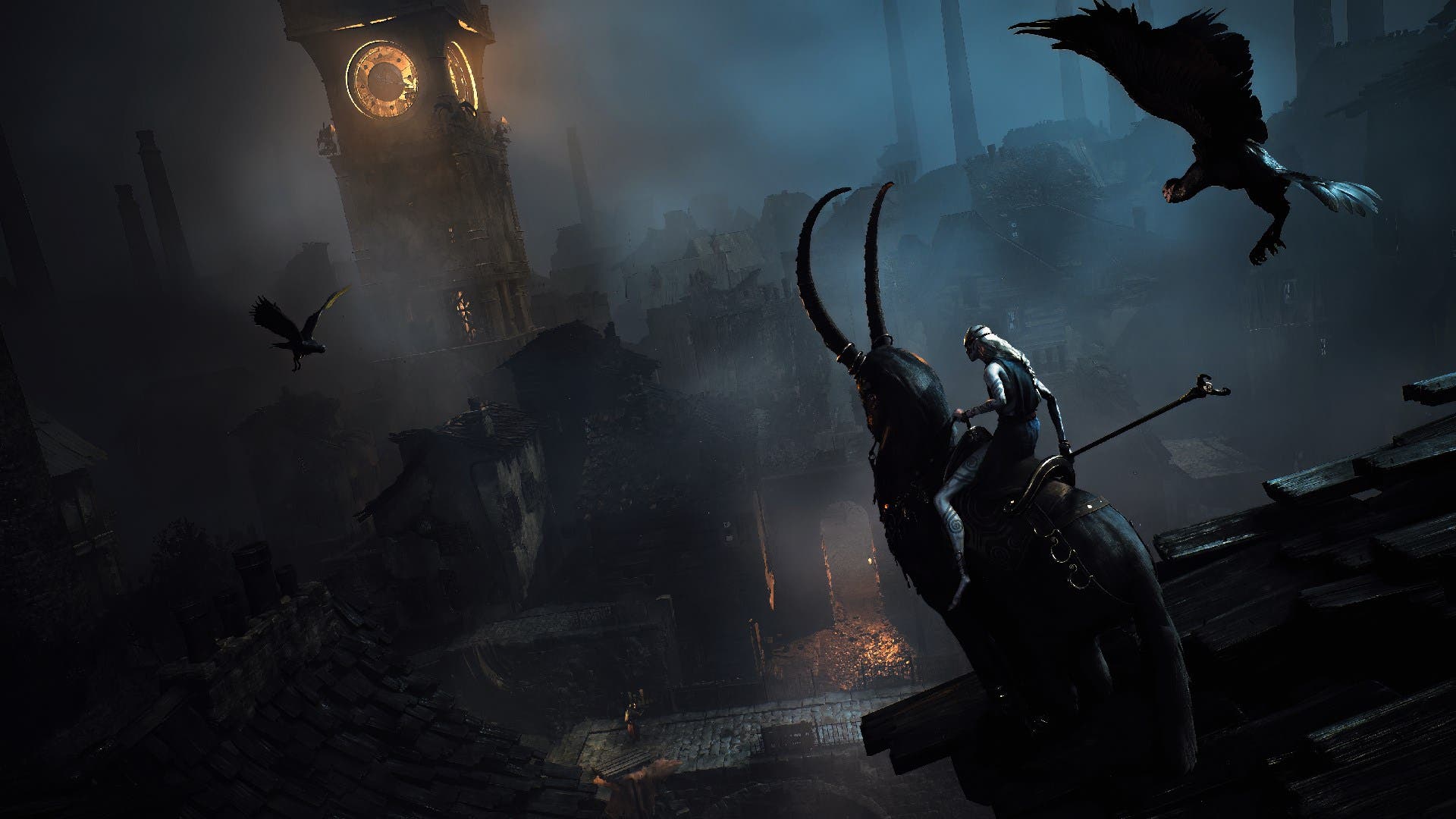
It’s really hard to find things to criticize about Remnant II, because it’s such a fun and carefully crafted experience, and it’s already so much more polished than the first game. It does very much rely on you having played the original game, as it throws you right back into the world and its setting with little immediate exposition. You can get all of the relevant lore information you need by talking to NPCs in Ward 13 early on, but if you’re starting fresh with Remnant II, you’re going to have some catching up to do, and it wouldn’t hurt to seek out a story/lore primer. Similarly, after the initial tutorial that teaches you the game’s basic mechanics, it throws you into the deep end and tasks you with learning through experimentation, particularly when it comes to tracking quest objectives and way-finding through your first world.
I’m not particularly interested in handholding while playing through games, but the early stages of our quest were relatively broad in definition; our only stated goal was to find our missing friend, with little indication as to what was required to find our way back out of N’Erud (although that did eventually come two hours later when we found an NPC who gave us a quest with more explicit instructions). I don’t know if this is a bad thing or not, but I could see brand new players being more confused if they weren’t used to Remnant II‘s “explore everything and you’ll find your way through” approach.
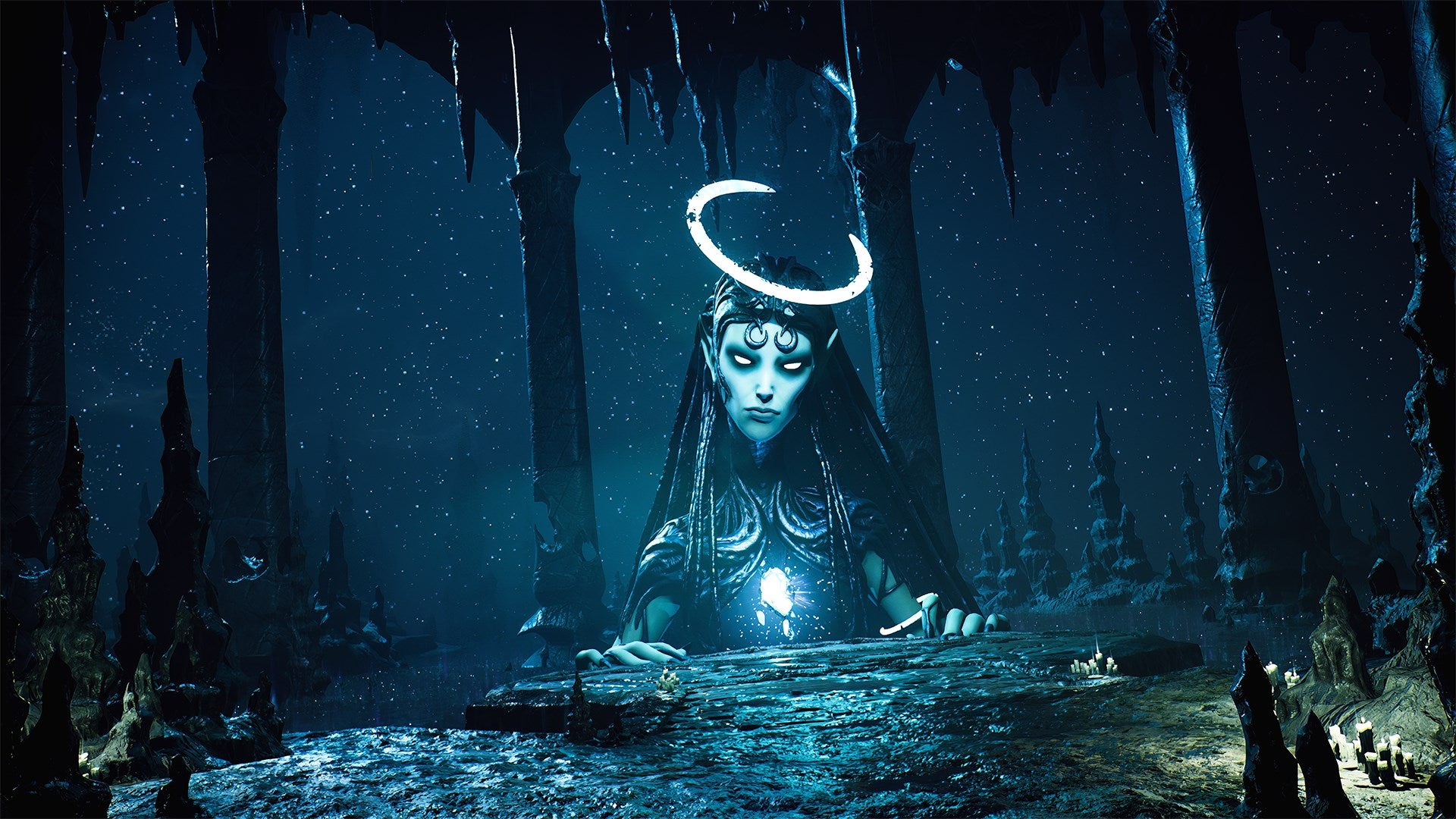
These are fairly minor complaints though; overall they didn’t detract from my experience in meaningful ways and there is some intentionality behind the broadly scoped mission objective approach. Nearly all I can think about after a play session are the craziest, most unexpected things I saw, and I have spent so much time laughing and whooping and hollering with my friends during our co-op sessions that these small things completely fade into the background.
Remnant II is a deeply imaginative, incredibly well designed game that will excite and thrill you repeatedly. It’s incredible to play with friends, and it’s an adventure unlike almost anything else I’ve ever seen, except for Remnant: From the Ashes. Remnant II builds on the template set out by its predecessor and pushes it to amazing new heights, and it is everything you could ask from a sequel and so much more.
A Steam code was provided in advance by the publisher for review purposes
